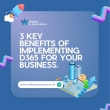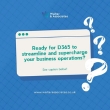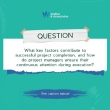Application migration is the process of transferring software applications from one environment to another. This may include relocating applications from in-house servers to the cloud, moving them between different cloud providers, or upgrading them with more modern systems.
Application migration can provide certain advantages such as better scalability, heightened security as well as cost effectiveness. Nevertheless, it requires thorough planning and taking into account a number of concerns so as to facilitate smooth changeover that will not result in major business disruptions.
What is Application Migration?

Application migration is the process through which software applications are transferred from their current environment to a new one. There are many reasons for this, such as to improve performance, minimise costs or make use of new features offered in updated platforms or cloud services.
Application Migration Strategy

When a business planning to relocate its software applications from one environment to another, e.g., from internal servers to cloud, it requires a proper approach referred to as application migration strategy. This strategy assist in making, inter alias, the migration to occur without interrupting the business.
1. Understanding Goals
First of all, it is necessary to pointing out of the objective of moving the applications, or the necessity of this procedure. It could be for cost cutting measure, better performance, or to take advantage of the new feature available in cloud.
2. Assessing Applications
Some of the applications may not necessarily need migration. That is why some Linux distributions can have specific needs or dependences and this is taken into account. It is advisable that each business unit assesses every application to establish which should be migrated and how.
3. Choosing the Right Approach
Application migration is not a monopoly of one technique where two techniques of migrating applications are discussed below. It could be done in one instance or done in parts/gradually. Both styles have some strengths and drawbacks; thus, one must select the option most appropriate for the company.
4. Planning and Timeline
Other tactics are the action plan in the format of timelines and specific steps to be accomplished. This ensures that all the persons involved know what to do and by when it should be accomplished.
5. Testing and Validation
It is necessary to stress that prior to migration, as well as after it was performed, the applications were tested to check their functionality in the new environment. This prevents occurrence of certain difficulties and enables the users never to encounter any complicated situations or challenges.
6. Optimisation
Once migrated, it is necessary to adjust the applications to the target setting as every new environment is unique. It could also entail some minor alterations made in an attempt to optimise on one aspect with regards to the other.
7. Risk Management
Migration can also be dangerous in a way that can be detrimental to a company because there can be data loss or even short-term space or time loss. Companies must also be prepared for the worst to happen and have contingencies according to the problematic situations that will arise.
8. Stakeholder Involvement
At the same time, the race must involve people from many divisions of the business. This could incorporate IT personnel, managers of certain departments, or merely the final consumers of these applications.
9. Communication
There should be specific and clear information exchange. Everyone should know the things that are going on, why those things are going on, and how those things could affect him or her.
10. Monitoring and Support
Even after migration is complete, it’s important to monitor the applications to make sure they continue to perform well. Providing support for users who might have questions or issues is also important.
Application Migration Risks

When considering application migration, there are several risks that businesses need to carefully evaluate and manage to ensure a smooth transition and avoid potential setbacks:When considering application migration, there are several risks that businesses need to carefully evaluate and manage to ensure a smooth transition and avoid potential setbacks:
1. Data Loss
While application migrating, one of the main focuses is the possible loss of data that might be extremely important. If data is not backed up or transferred the right way then it can lead to a lot of losses, time wasted, and big inconveniences for business.
2. System Downtime
Application migration frequently involves the unavailability of applications for a certain period of time, or even by some measures; incomplete. Longer stopping times tend to have immense effects on productivity as well as customer experience; thus, stopping times must be kept to a minimal and regulated.
3. Compatibility Issues
Running applications in new environments, for example transferring them to a new OS or letting them migrate to the cloud, can be problematic. These issues may stem either from dependencies on particular hardware and/or particular versions of software not compatible with the new environment.
4. Security Vulnerabilities
It is therefore important to note that during application migration, there are open grounds to insecurity vices since adequate security measures that should be adopted in the new environment may not have been adopted.
This entails making sure that the information that is being collected, stored, processed, and transmitted will be protected from hackers and other related security risks by encrypting the information, limiting the access to the information, and making sure that the information meets the set level of security standards.
5. Unexpected Costs
The migration from one application may be costly and when it is being relocated, costs such as licensing costs, costs of training on the new applications and technical costs may arise unexpectedly. These costs must be incorporated into project costing and a proper cost benefit analysis should be performed.
6. Performance Issues
In the new location, applications that undergo migration can have issues such as resource availability, communication delay and improper setting up of the application environment. The areas of performance testing and optimization should be of paramount concern to tackle the above problems.
7. User Resistance
Users may resist change brought about by application migration because either it alters people’s known work patterns or because they have to learn new interfaces or procedures. While resistance is an anticipated challenge that accompanies the implementation of new technologies, it is essential to understand how it would be tackled to enable proper implementation, especially for all the users to willingly and fully partake in the new change to take place and be effective fully.
8. Business Disruption
The problems resulting from the migration of applications are the decreased ability to provide service and the disruption of business, which can directly affect customer satisfaction. Some of these risks can be mitigated through the use of contingency planning and different phases of migration.
9. Compliance and Legal Issues
It could also increase compliance issues because tasks may be transferred to other environments which may have rules on data control, location or type of industry. It is crucial to follow the laws relating to the delivery of the services to avert legal repercussions.
10. Stakeholder Alignment
Lack of communication and engagement of stakeholder in application migration planning and implementation can result in miscommunication, rivalry in objectives, and time consumption. Healing stakeholders across organisational departments and stratums guarantees that all the needs of stakeholders are met.
Managing these risks before embarking on application migration is effective in reducing the likelihood of negative impacts on business when the migration process is underway, therefore improving the success of the modernisation process of the organisation’s digital landscape.
Changing Application Migration Use Cases

The ways businesses use application migration are evolving. It’s not just about moving software from one place to another for cost savings anymore. Now, companies migrate applications to gain flexibility, improve performance, and keep up with technological advancements.
1. Flexibility
Businesses now migrate applications to cloud platforms like AWS, Azure, or Google Cloud to gain flexibility. Cloud environments allow them to scale resources up or down based on demand without investing in physical hardware.
2. Performance Improvement
Moving applications to newer environments or platforms often improves performance. New technologies can handle larger volumes of data more efficiently or provide faster processing speeds, benefiting businesses that rely on quick data processing or real-time analytics.
3. Access to Advanced Features
Modern cloud platforms offer advanced features like AI tools, machine learning capabilities, and big data analytics. By migrating applications to these platforms, businesses can leverage these features to enhance their operations, gain insights from data, and improve decision-making processes.
4. Enhanced Security
Cloud providers invest heavily in security measures, often more than individual businesses can afford. Migrating applications to cloud environments can improve security by leveraging these robust security protocols and continuous updates against cyber threats.
5. Cost Efficiency
While cost savings remain a key driver, it’s now about more than just reducing IT infrastructure expenses. Businesses also consider long-term cost efficiencies, such as reducing maintenance costs, increasing operational efficiency, and freeing up resources for innovation.
6. Adaptability to Market Changes
In a rapidly changing market, businesses must adapt quickly. Application migration allows them to adopt new technologies, respond to customer demands faster, and stay competitive in their industry.
Overall, the use cases for application migration have expanded beyond simple cost-cutting measures. Businesses now migrate applications to improve performance, access advanced features, enhance security, and adapt to market changes swiftly. This strategic approach helps them stay agile, innovate, and meet evolving business needs effectively.
Management consulting firms play a crucial role in guiding companies through this transformation, offering expertise in strategic planning, risk management, and implementation strategies to maximise the benefits of application migration.
Application Migration Stages

Application migration is a process that involves several stages to ensure a smooth and successful transition from one environment to another. These stages are crucial for planning, executing, and validating the migration process:
1. Planning
This initial stage involves defining goals, assessing current applications, and outlining the migration strategy. It includes identifying dependencies, understanding resource requirements, and setting timelines and milestones for the migration project.
2. Assessment
In this stage, applications are thoroughly evaluated to determine their suitability for migration. Factors considered include business criticality, technical compatibility with the target environment, and potential impact on users and operations.
3. Migration
The migration stage involves the actual transfer of applications from their current environment to the new one. It includes data migration, application installation or deployment, configuration adjustments, and testing to ensure functionality in the new environment.
4. Validation
Once migrated, applications undergo rigorous testing and verification to ensure they perform as expected in the new environment. This stage includes performance testing, integration testing with other systems, and user acceptance testing to verify that all functionalities are intact.
5. Optimisation
After validation, optimisations may be necessary to fine-tune application performance, address any issues that arose during testing, and optimise resource utilisation in the new environment. This stage aims to maximise the benefits of migration and ensure ongoing operational efficiency.
Each of these stages demands meticulous planning, collaboration among stakeholders, and comprehensive testing to minimise disruptions and ensure a successful application migration process, with support from project development services to streamline operations.
Migrating Legacy Applications

Migrating legacy applications involves moving older software systems from their current environment to a new one. This could mean transferring them from older on-premises servers to modern cloud platforms like AWS, Azure, or Google Cloud.
Legacy applications are often outdated in technology and may depend on older hardware or software components that are no longer supported or efficient.
The challenge of migrating legacy applications lies in ensuring that they function properly in the new environment without disruptions to business operations. It requires carefully assessing the application’s architecture, dependencies, and compatibility with the target platform.
Businesses must decide whether to update, refactor, or replace the application to align it with current technology standards and business needs.
Key considerations in migrating legacy applications include:
1. Compatibility
Ensuring that the application can run effectively on the new platform without issues related to operating systems, databases, or middleware.
2. Data Migration
Moving data associated with the application to the new environment securely and without loss or corruption.
3. Performance
Optimising the application’s performance in the new environment to meet business requirements.
4. Security
Implementing adequate security measures to protect data and ensure compliance with regulatory requirements.
5. Cost
Evaluating the costs associated with migration, including licensing, infrastructure, and ongoing maintenance.
6. Testing
Conducting thorough testing throughout the migration process to identify and resolve any issues before deployment.
7. Training and Support
Providing training for users and support staff to ensure they can effectively use and maintain the migrated application.
Successful migration of legacy applications requires collaboration between IT teams, stakeholders, and possibly external software consulting services or project development services to navigate complexities and ensure a smooth transition.
By addressing these considerations thoughtfully, businesses can leverage the benefits of modern technology while preserving the functionality and value of their legacy applications.
Conclusion
In conclusion, application migration is a strategic initiative that can enhance business agility and efficiency. However, it requires careful planning, stakeholder engagement, and risk management to achieve successful outcomes.
Businesses should leverage application migration services, application migration tools, and cloud migration services offered by management consulting firms or software consulting services to navigate complexities and maximise the benefits of cloud application migration.
By evaluating candidates for migration, addressing legacy application migration challenges, and adopting a comprehensive application migration strategy, businesses can successfully modernise their IT infrastructure and drive innovation.
Walter & Associates are a company that deals with the complicated process of application migration in businesses. They give strategies customised for particular needs as well as offering hands-on guidance to facilitate smooth changes into new environments like cloud platforms, or even upgraded systems.
The areas where they have specialised include determining the compatibility of applications, secure management of data migration processes, boosting performance and minimising risks. Walter & Associates make it possible for organisations to swiftly modernise their operations using minimal interruption and maximisation of the benefits associated with new technology infrastructures by leveraging on their experience and services in application migration.























